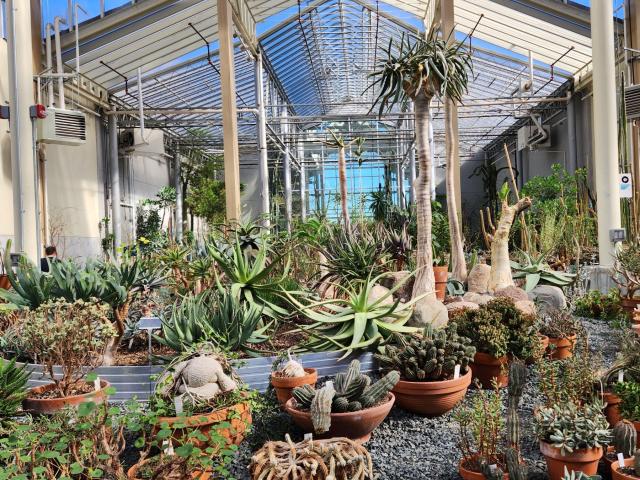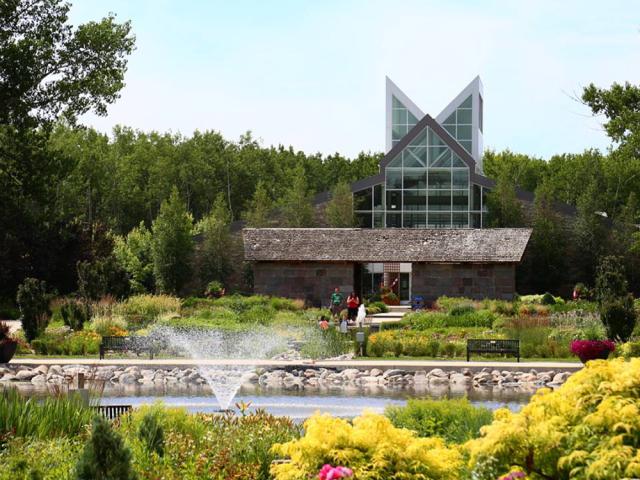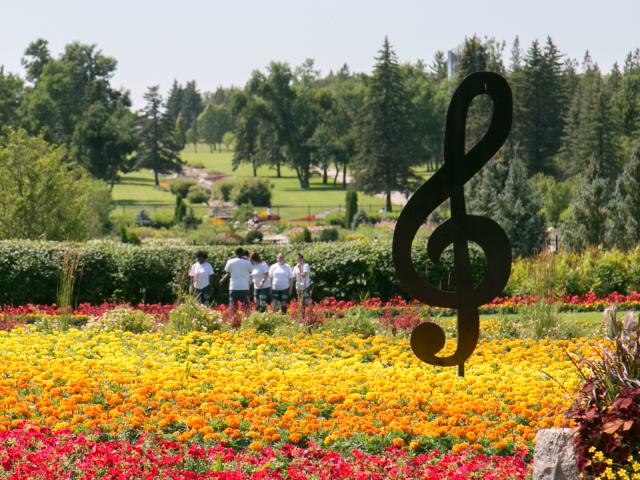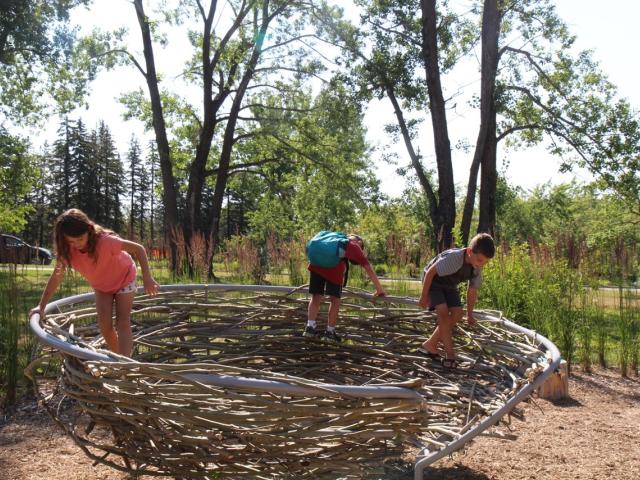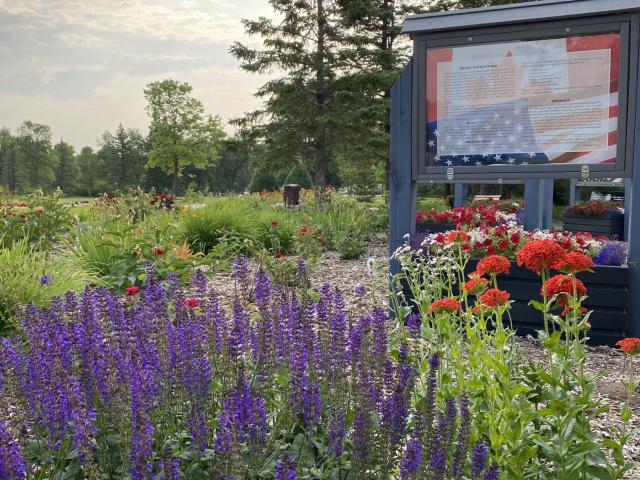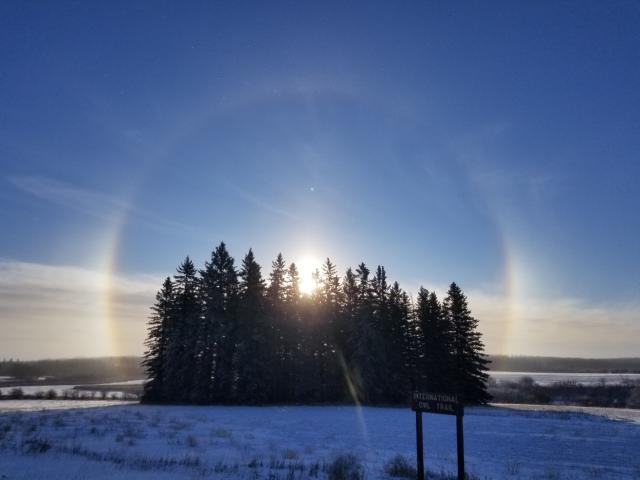International Peace Garden
Nestled in the heart of the Turtle Mountains, where North Dakota and Manitoba meet, the International Peace Garden is a living testament to harmony, collaboration, and natural beauty. Since its founding, the Garden has provided a space for reflection, education, art, and recreation—welcoming visitors to celebrate the spirit of peace in one of North America’s most serene landscapes.
The vision for the Garden began in 1928 when horticulturist Henry J. Moore and his colleagues from Canada and the United States imagined a shared space on the border—one that would symbolize the enduring friendship between the two nations. Their dream took root, and on July 14, 1932, a remarkable 50,000 people gathered at this prairie crossroads to dedicate the Garden. A simple stone cairn was placed along the 49th Parallel, inscribed with a pledge of peace:
"To God in His Glory. We two nations dedicate this Garden and pledge ourselves that as long as man shall live; we will not take up arms against one another."
Today, that pledge continues to shape the International Peace Garden’s mission. Spanning nearly 2,400 acres of lakes, prairie, and woodlands, the Garden offers a one-of-a-kind experience. More than 100,000 flowers bloom annually in the iconic formal gardens, where the sunken perennial garden, floral clock, and striking floral flag displays frame the border. The Peace Garden is also home to one of the world’s most diverse collections of cacti and succulents. The Vitko Collection, housed in a newly expanded conservatory, showcases more than 5,000 unique species from across North America, South America, and Africa—offering visitors an immersive journey through global plant life.
The Garden continues to evolve, welcoming new generations to connect with nature and history. In 2022, the Children’s Nature Play Area was introduced, designed to inspire curiosity and discovery. The space, themed around regional wildlife, encourages young explorers to engage with the natural world through play and learning.
Throughout the grounds, guests will find monuments and landmarks that deepen the Garden’s message of unity. The Peace Chapel stands as a quiet sanctuary, its walls inscribed with words of wisdom on peace. Nearby, the Hands of Peace sculpture and the 9/11 Memorial honor resilience and hope. The Carillon Bell Tower, Interpretive Center, and other sites provide moments of reflection amid the breathtaking landscape.
Beyond its gardens and monuments, the International Peace Garden offers a wide range of experiences. Visitors can browse the gift shop, enjoy a meal at the summer café, or explore the horticultural library. Outdoor enthusiasts can hike scenic trails, enjoy a picnic, or launch a kayak or canoe on the tranquil waters. The Garden is also home to the International Music Camp and the North American Game Warden Museum, enriching its role as a cultural and educational destination.
For more than 90 years, the International Peace Garden has stood as a symbol of friendship, reminding us that peace, like a garden, must be nurtured to thrive.All Features
-
Accessibility
- Partially Paved,
- Passenger Drop-off/Pick-up,
- Wheelchair-accessible,
- Wheelchair-accessible Parking
-
Availability
- Open Year 'Round
-
Facility Amenities
- Historic Marker,
- Restrooms,
- Trails,
- WiFi Available,
- EV Charging Station
-
General Information
- Family-Friendly,
- Pet-Friendly
-
Group & Meeting Information
- Accommodates Tour Groups,
- Advance Reservations Required for Groups,
- Group Rates Available,
- Maximum Group Number: 500,
- Total Capacity of Meeting Space: 500
-
Location
- Countryside


